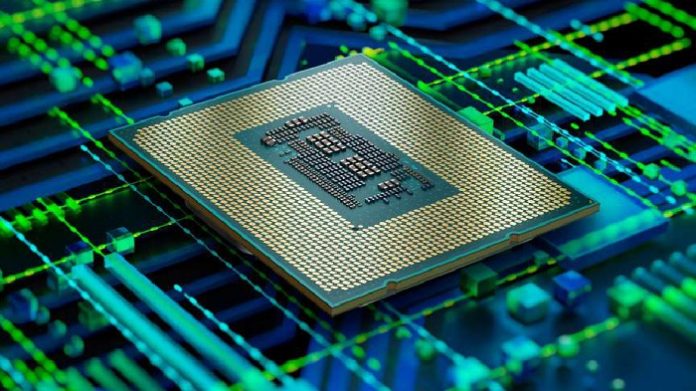Chipmaker Intel said it will invest $20 billion to build a new factory in Ohio, an attempt to help alleviate a global shortage of chips powering everything from phones to cars to home appliances while also signaling the giant company’s commitment to manufacturing crucial technology products in the U.S.
The move could also create a new technology hub in central Ohio as related businesses that support chip manufacturing open new facilities and bring expertise to the region.
Intel said two planned factories, or fabs, will support its own line of processors, as well as its new “foundry” business, which will build chips designed by other firms. Existing chip foundries turn out a vast number of custom-designed chips, mostly in Asia. The business is currently dominated by Taiwan Semiconductor Manufacturing Co. or TSMC.
The future production site aims to meet multiple needs, Intel CEO Patrick Gelsinger said during a White House event. Chips built there won’t just reduce supply chain pressures, he said, but will also bolster U.S. national security while bringing more tech jobs to the region.
The two factories on a 1,000-acre site in Licking County, just east of Columbus, are expected to create 3,000 company jobs—many of them highly skilled—and 7,000 construction jobs. The facility will support tens of thousands of additional jobs for suppliers and partners, Intel and local and state officials said.
“A semiconductor factory is not like other factories,” said Gelsinger, a former Intel executive who returned to the company as CEO in 2021. “It’s more like a small city supporting a vibrant community of services, suppliers and ancillary businesses. You can think about this as a magnet for the entire tech industry.”
President Joe Biden used Intel’s Ohio announcement to push a $52 billion bill awaiting House approval that would invest in the chip sector and help ensure more production occurs in the U.S.
“We are going to invest in America,” Biden said at the White House. “We’re investing in American workers. We’re going to stamp everything we can, ‘Made in America,’ especially these computer chips.”
Construction is expected to begin this year, with production coming online at the end of 2025. The company is also investing an additional $100 million for an education pipeline to help provide jobs for the facility. Total investment could top $100 billion over the decade, with six additional factories, Gelsinger said.
Gelsinger said he expects the Ohio site will also supply specialized chips for cars—a priority for U.S. consumers and officials—and other products such as mobile devices.
Intel’s Ohio site could help relieve pressure on the company’s other production lines.
But making more computer chips in the U.S. won’t entirely protect the industry from supply chain disruptions and shortages because the chips still will be sent to Asia for assembling and packaging, said Nina Turner, a research analyst at IDC.
After years of heavy reliance on Asia for the production of computer chips, vulnerability to shortages of the crucial components was exposed in the U.S. and Europe as they began to emerge economically from the pandemic.
The U.S. share of the worldwide chip manufacturing market has declined from 37% in 1990 to 12% today, according to the Semiconductor Industry Association, and shortages have become a potential risk.
Shortages of chips have crimped the ability of U.S. automakers to produce vehicles, and last year, General Motors was unseated by Toyota as the nation’s top-selling automaker for the first time.
The U.S. and Europe are pushing to aggressively to build chipmaking capacity and reduce reliance on producers that are now mostly based in Asia. Semiconductor businesses have also been trying to diversify their operations to avoid bottlenecks caused by problems—such as a natural disaster or pandemic lockdown—in a specific region.
Several chipmakers last year signaled an interest in expanding their American operations if the U.S. government is able to make it easier to build chip plants. Samsung said in November it plans to build a $17 billion factory outside of Austin, Texas.
As Biden alluded to, lawmakers have been urging House and Senate leaders to fully fund a law meant to address the semiconductor chip shortage. They want Congress to fully fund the $52 billion CHIPS for America Act, allowing for stateside investment in semiconductor factories.
Not only has the chip shortage disrupted the U.S. economy, it is also creating a vulnerability in the country’s defense system since eight of every 10 chips are produced in Asia, lawmakers say.
Intel executives made clear Friday that the size of its Ohio complex will depend on passage of the federal subsidies sought by the Biden administration and Ohio lawmakers.
“The scope and pace of Intel’s expansion in Ohio,” said a statement from Keyvan Esfarjani, Intel’s senior vice president of manufacturing, “will depend heavily on funding from the CHIPS Act.”
The Intel project is the largest single private-sector investment in Ohio’s history, on par with an agreement in 1977 that brought Honda to central Ohio, where it now employs more than 14,000 people.
“Intel’s new facilities will be transformative for our state, creating thousands of good-paying jobs in Ohio manufacturing strategically vital semiconductors,” Ohio Gov. Mike DeWine said in a statement.
Ohio beat out 40 other states for the project, DeWine said. State leaders pledged to work with the company to provide skilled workers who will need anywhere from a two-year community college education to advanced degrees.









